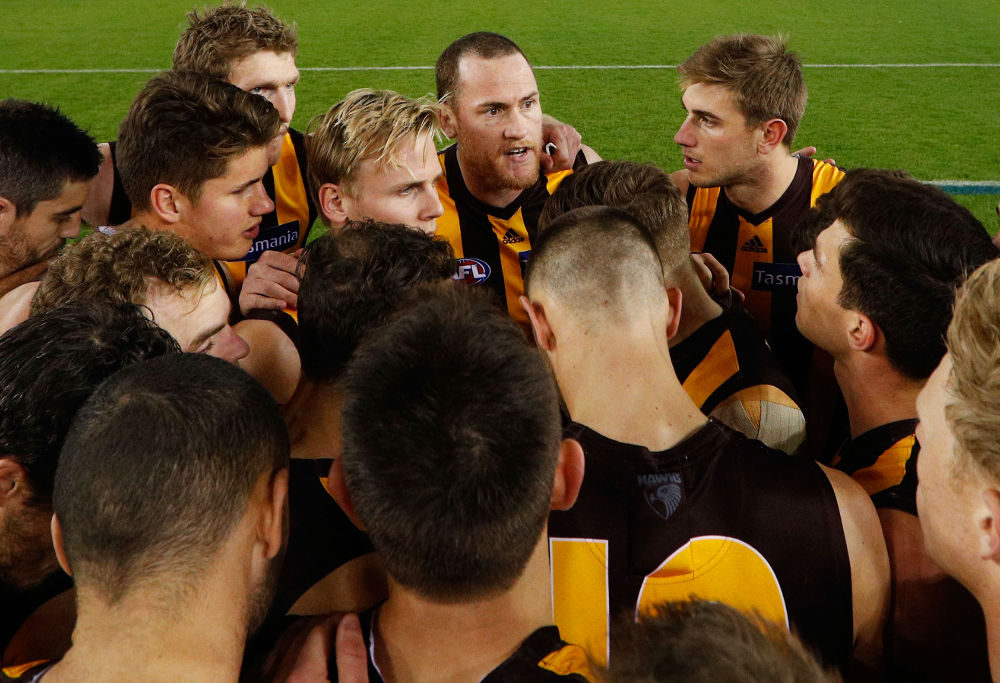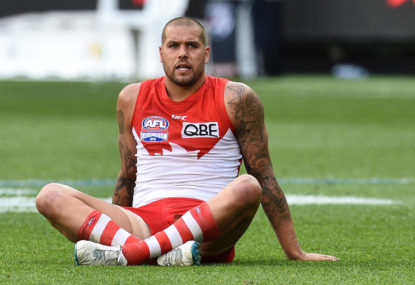Once again, John Longmire has led the Sydney Swans to finals failure. As ever, he will escape any meaningful scrutiny.
This year, Longmire took the 2016 grand finalist and a team almost unanimously picked as a top-two side to a sixth placed finish on the ladder and a bundling out in the second week of finals. Laughably, some were claiming him to be coach of the year in the latter stages of the season.
In the five years since their 2012 premiership, Sydney have failed to deliver on expectations. There’s no other way to cut it. Five years of top six finishes, four of them in the top four, twice top of the ladder, but no flag to show for it.
We know the talent Longmire has at his disposal. Almost half the team is made up of All-Australians and Rising Star winners.
The names roll off the tongue – the best forward in the game Buddy Franklin, the best inside ball-winner Josh Kennedy, the most versatile defender in Dane Rampe, the best lock-down back pocket in Nick Smith, and then we get to the likes of Luke Parker, Daniel Hannebery, Jarrad McVeigh and Kieren Jack.
The Swans paid a truly horrible draft penalty for their consistent success and top-four finishes across 2014-15, securing Isaac Heeney and Callum Mills in those respective drafts for a snack and a song. Mills won his Rising Star in 2016, while Heeney may well have in 2015 if he had played a full season.
Heeney had a disappointing year in some eyes, even allowing for starting the season with glandular fever. Despite only playing 20 of 24 games, he still finished top five at the Swans for total clearances, contested possessions and tackles, plus disposals per game.

Isaac Heeney (AAP Image/Julian Smith)
Sydney’s second and lower tier players get a lot of plaudits too, and rightly so.
Heath Grundy has never been All-Australian, and can consider himself unlucky. Jake Lloyd is one of the best kicks in the AFL, and gets a lot of the ball to show it. Zak Jones, Tom Papley, George Hewett, Will Hayward and Lewis Melican have shown they have bright futures in the roles identified for them.
The Swans also have a wealth of ruck/forward stocks, with Kurt Tippett left out of the finals series behind Sam Naismith and Callum Sinclair. Remember, Toby Nankervis, the number one ruckman at Richmond, was fourth in the pecking order behind these three.
The trademark of Sydney under Longmire is their consistency. They are consistent in matches. They are consistent across seasons. The offer up the same brand of football year after year.
But this consistency comes at a cost. Their predictability can be exploited, as we saw on Friday night against Geelong at the MCG.
Chris Scott put on a coaching masterclass in the semi-final. Patrick Dangerfield at full-forward. Mark Blicavs tagging Josh Kennedy. Greater responsibility to the second string Cats on-ballers. Implementing the possession game against the Swans that Hawthorn has used so effectively, spreading them far and wide.
Given Clarkson and the Hawks have had so much success against Longmire, why isn’t this game-plan mimicked all the time against Sydney?
The answer is that most coaches back their own methods in, but with varying degrees of motivation.
If they’re coaching a bottom or re-building side in the bottom half of the ladder, then the senior coach is trying to shape them in his own style, getting his players to learn on the job. Losing the immediate four points to Sydney isn’t a concern; they have longer goals in mind. Besides, their players probably don’t have the combination of skill, hardness and running capacity to unpick the Swans.

(Photo by Michael Dodge/AFL Media/Getty Images)
For a side at or near the top of the ladder, a coach has every right to believe that his method is successful, and is the reason they are up there. They continue to play their way, believing that if they can continue to hone their players, when finals arrive, they will produce winning performances due to being so well drilled.
But Chris Scott was desperate. His team had been demolished in week one of finals. His last three matches against the Swans were losses in the vicinity of 6-8 goals. Something had to be done.
And despite John Longmire’s protests in the post-match press conference, he wasn’t ready for it.
Chris Scott could plan his changes and implement radical ideas because he knew exactly what he was going to be facing. An opponent that does the same thing every time can be exploited, if you’re good enough to do it.
In the last five years, Sydney have lost finals to Geelong, Western Bulldogs, GWS, North Melbourne, Fremantle and Hawthorn (twice). That’s a lot of different teams, coaches and methods to have brought Longmire undone at the pointy end of the season.
Debate often rages about whether it’s your top six or bottom six than wins finals. The Swans bottom end players have been shown up badly in their last handful of finals losses. Gary Rohan is the poster-child for this group. Sam Reid is another. Some of those to have let Sydney down are no longer at the club.
By next year’s finals series, half a dozen of their most important players will be on the wrong side of 30, and those lower tier players are going to have to carry more load.
It is understandable that the Sydney hierarchy believe that the best way to win another premiership is if they keep rocking up and playing their way. Eventually, they think, the chips will fall for them.
Is it enough, given the talent they on their list and the outstanding development capabilities they have shown?
The Swans will front up again next year. They always do. Longmire will be there too. He always is.
But the more things stay the same, the more things stay the same.































































































